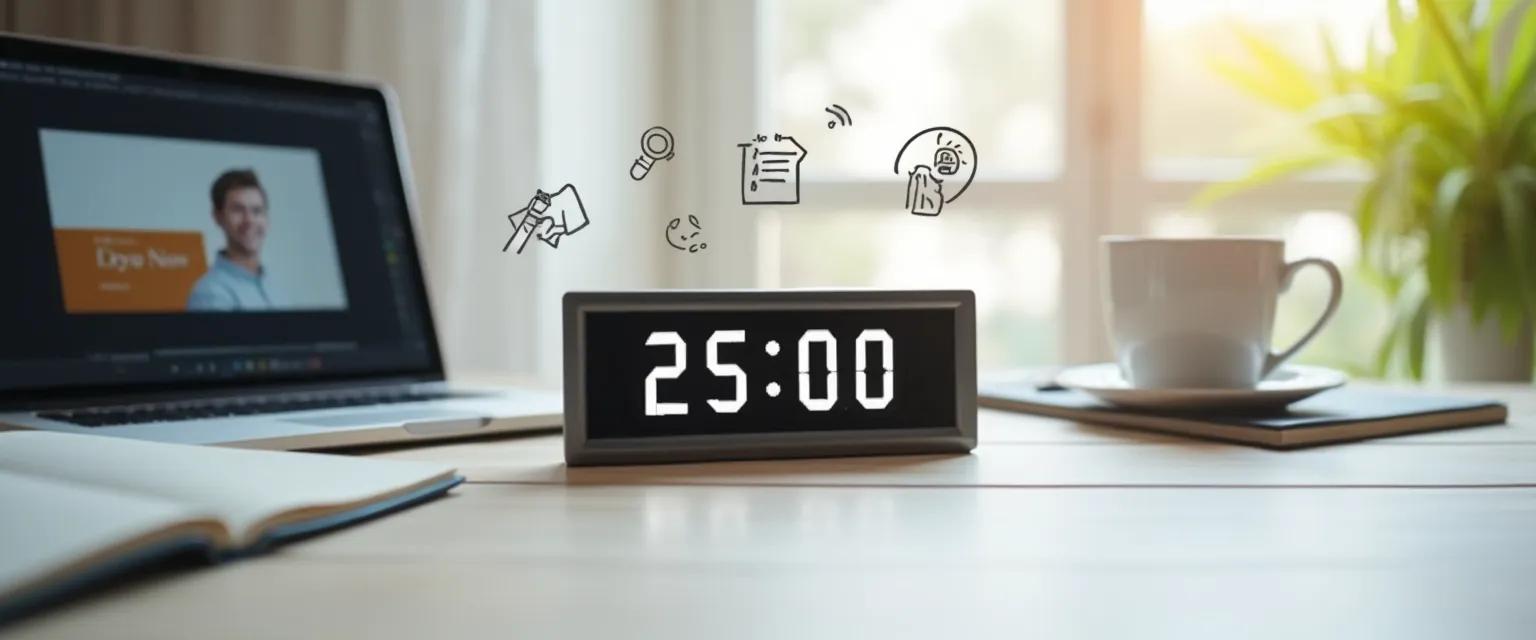5 Powerful Pomodoro Techniques to Overcome Procrastination in Digital Learning
Ever feel like your online learning ambitions are constantly derailed by distractions? You're not alone. Procrastination in digital learning environments has become an epidemic, with research showing that 87% of online students regularly delay their coursework. The digital landscape presents unique challenges that traditional focus techniques weren't designed to address. While the classic Pomodoro method—25 minutes of work followed by a 5-minute break—works well for conventional studying, digital learning requires specialized approaches to combat the endless scroll of notifications, the temptation of multiple browser tabs, and the particular mental fatigue that comes from extended screen time.
What makes procrastination in digital learning particularly challenging is the constant competition for your attention. Unlike a physical classroom with clear boundaries, your online learning environment likely shares space with your entertainment, social connections, and work responsibilities—all just a click away. The good news? By adapting the time-tested Pomodoro technique specifically for digital environments, you can create powerful barriers against procrastination and transform your focus strategies for online success.
Understanding Procrastination in Digital Learning Environments
Digital learning environments create a perfect storm for procrastination. Unlike traditional learning settings, online courses lack immediate accountability and face-to-face interaction, making it easier to postpone assignments. The constant ping of notifications creates what researchers call "attention residue"—when your focus remains partially stuck on previous activities even after switching tasks. This fragmented attention is a primary driver of procrastination in digital learning contexts.
Screen fatigue represents another significant barrier. Extended screen time leads to visual and mental exhaustion that can trigger avoidance behaviors. Studies show that after 90 minutes of continuous digital engagement, cognitive performance drops by approximately 30%, creating a neurological push toward procrastination. This digital-specific fatigue doesn't respond well to traditional time management techniques.
The architecture of online platforms often works against us too. Infinite scrolling, autoplay features, and recommendation algorithms are specifically designed to capture and maintain our attention, creating what psychologists call "digital environment friction" that makes it harder to stay on task with learning objectives. Understanding these psychological barriers is the first step toward implementing effective counter-strategies.
5 Modified Pomodoro Techniques for Digital Learning Procrastination
The Screen-Break Pomodoro tackles digital fatigue head-on. Work for 20 focused minutes on your course material, then take a 5-minute break that's completely screen-free. During breaks, look out a window, stretch, or do quick physical movements to reset your visual system and mental energy. This technique reduces the cumulative screen fatigue that fuels procrastination in digital learning environments.
The Progressive Digital Pomodoro acknowledges that getting started is often the hardest part. Begin with just 15 minutes of focused work, followed by a 3-minute break. For your next session, increase to 20 minutes with a 4-minute break, and eventually build to 30-minute sessions. This gradual approach helps overcome initial resistance—the primary barrier in procrastination in digital learning contexts.
The Single-Tab Pomodoro creates a distraction-free digital environment. Close all unnecessary tabs and applications before starting your timer. Use browser extensions that temporarily block distracting websites during your work periods. This technique directly counters the tab-hopping behavior that characterizes procrastination in digital learning settings.
The Reward-Based Digital Pomodoro incorporates motivation techniques by attaching small, meaningful rewards to completed sessions. After four successful 25-minute sessions, allow yourself 15 minutes of guilt-free social media time or a favorite digital activity. This technique leverages the brain's reward pathways to overcome resistance.
The Accountability Pomodoro harnesses social commitment by coordinating study sessions with peers. Use video conferencing to work simultaneously in 25-minute blocks, keeping cameras on during focus periods. The social visibility creates positive pressure that significantly reduces procrastination in digital learning contexts.
Implementing Digital Pomodoro Techniques to Transform Your Learning Experience
The most effective approach to overcoming procrastination in digital learning begins with matching the technique to your specific procrastination pattern. If you're easily distracted by notifications, the Single-Tab Pomodoro will serve you best. If you struggle with initial motivation, the Progressive approach provides the gentlest entry point.
Digital tools can enhance these techniques—try Focus Booster, Forest, or Pomofocus for specialized digital Pomodoro timers. The key is consistency: commit to your chosen technique for at least two weeks before assessing its effectiveness. Remember that overcoming procrastination in digital learning is itself a skill that improves with practice, creating a positive cycle of increased focus and reduced resistance to online coursework.




